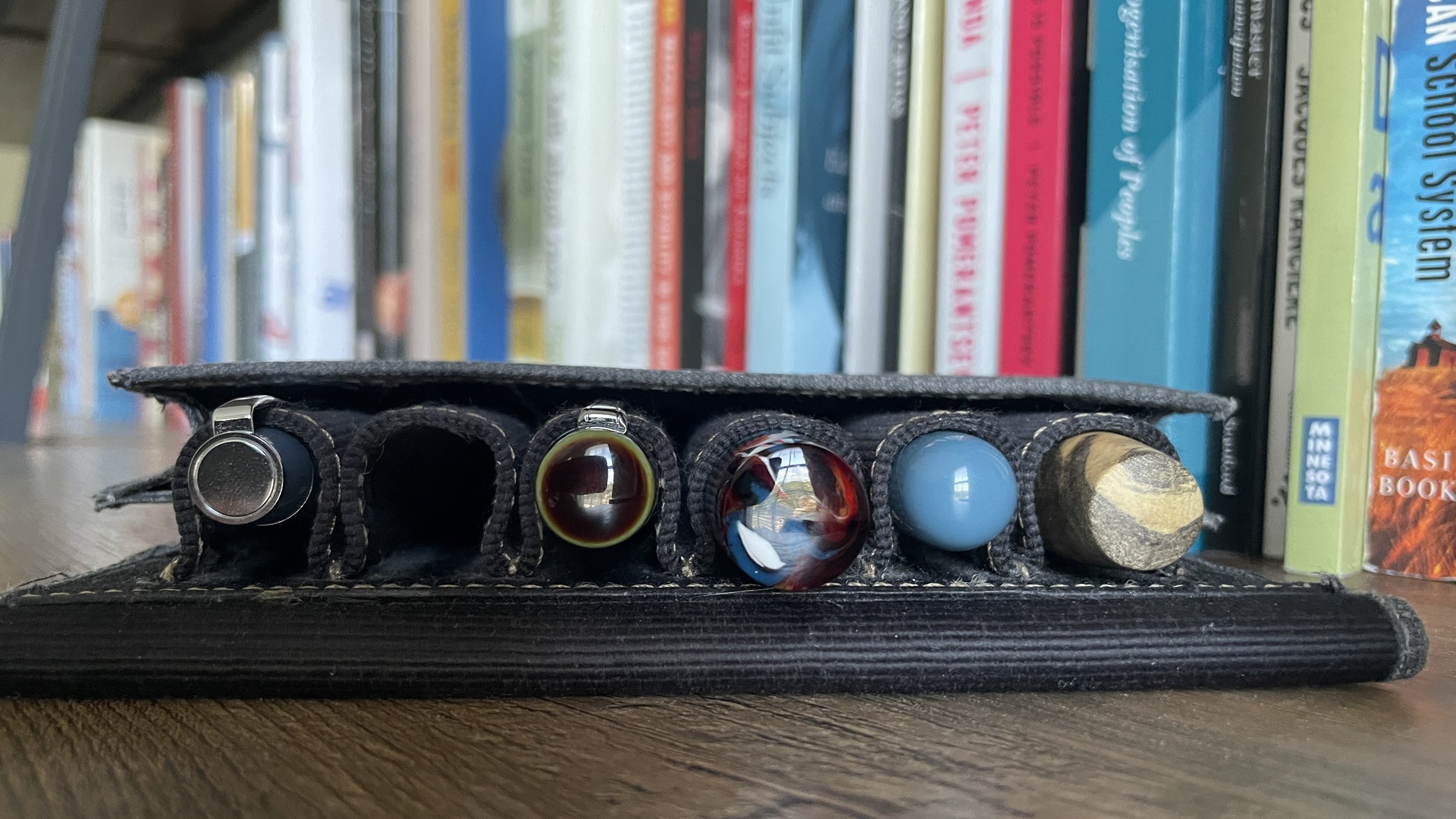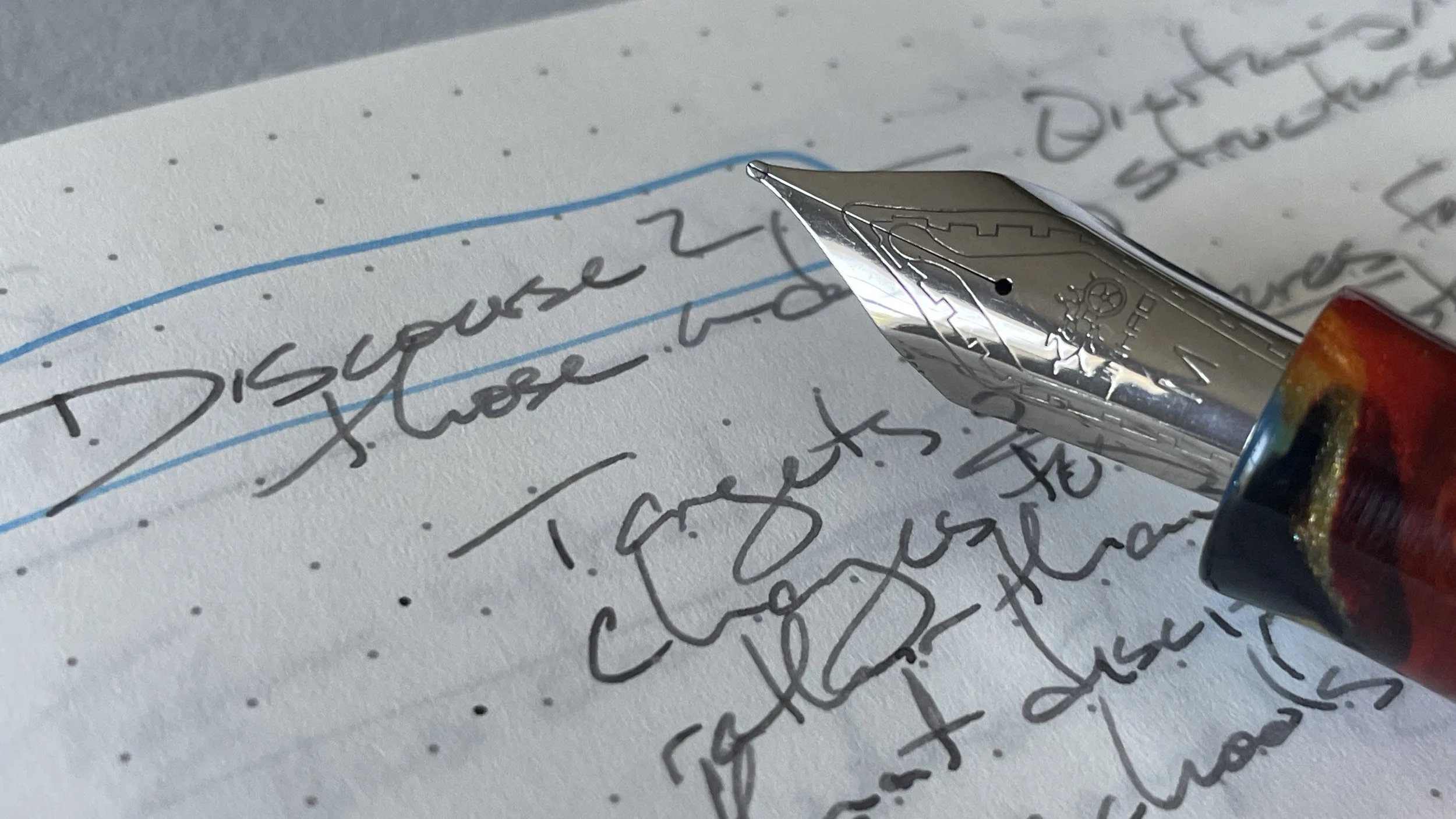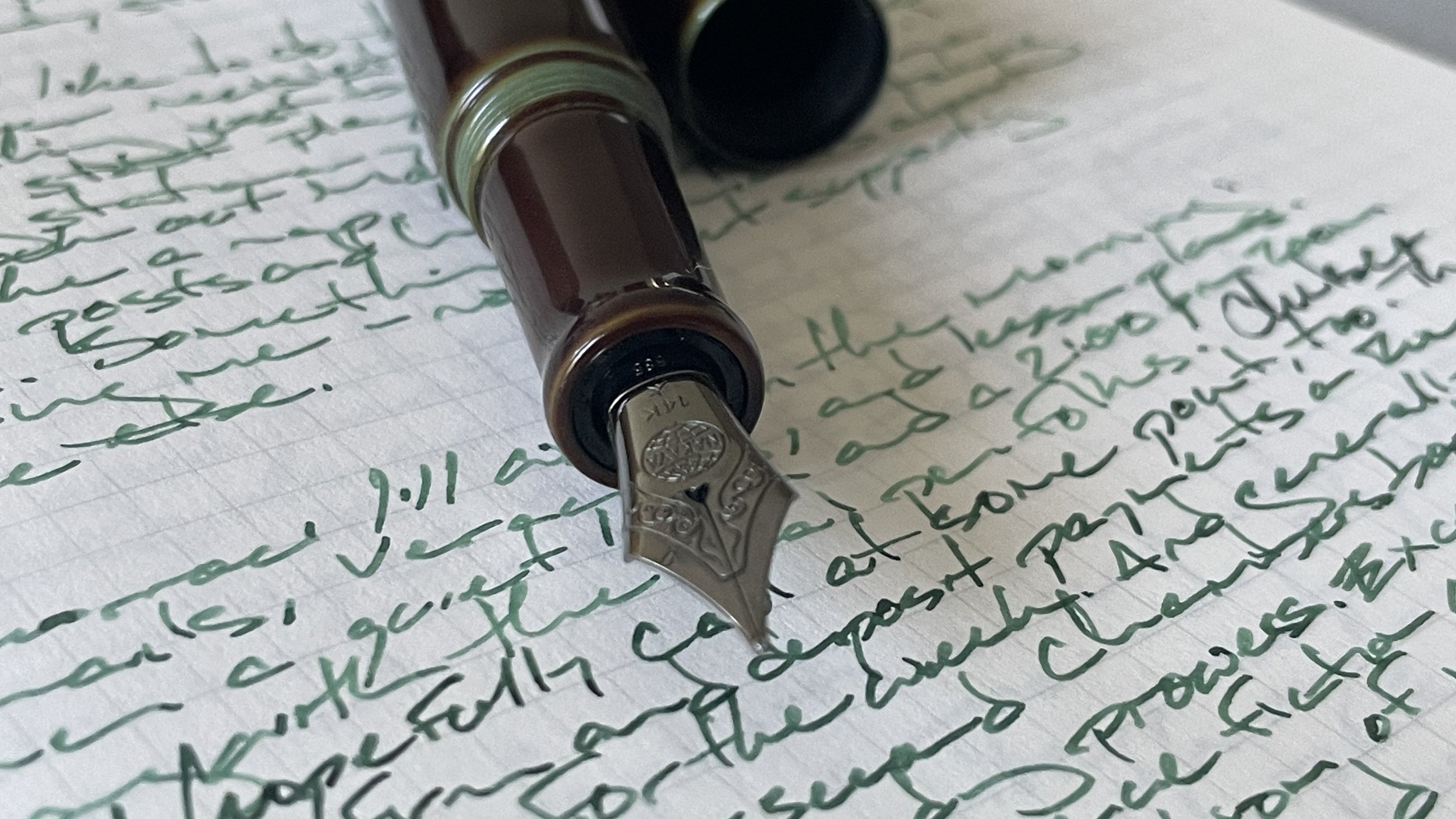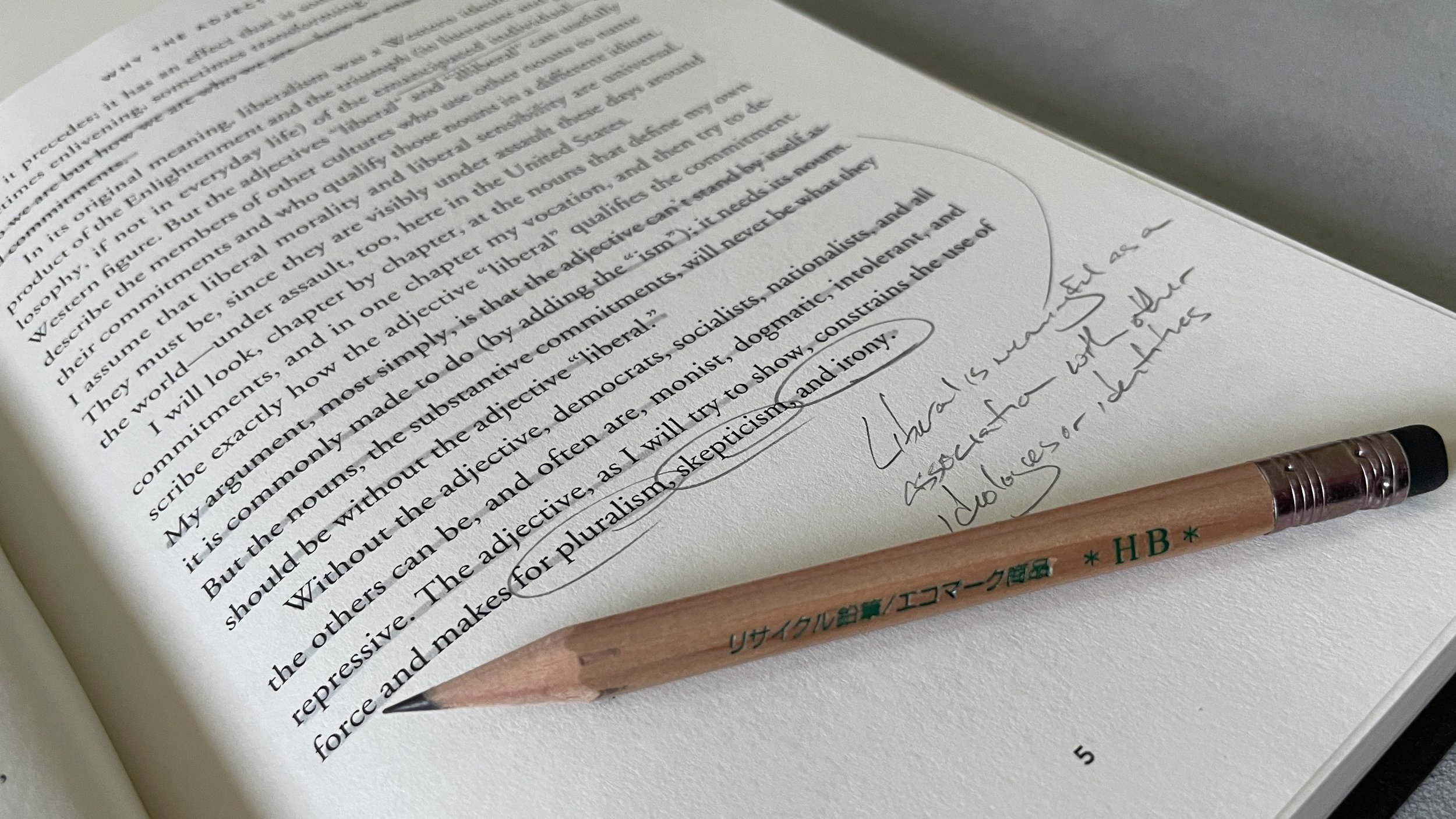Overthinking my under-thought indexing routine
Notetaking, bullet journaling, and commonplacing all reinforce the habit of recording clear, concise headings at the top of every spread. Accurate recollection relies on clear headings to find the jottings I need weeks or months after I took the note. Easy searching breathes an air of specific headings — so I choose the right page for the information I’m looking for in those future weeks.
I rethought the practice as I built out my teaching bullet journal. So, the purpose of a header is to share with future me: 1.) an accurate description of what’s on the page; and 2.) help me to locate the specific page when I need that information. Do I need headings on sections that are self-explanatory for me? My answer: nope-ity nope.
The primary offender is my index. I am omitting an index header this school year. A small change that puts me in a headspace to continue interrogating my notetaking habits more broadly. Self-reflection aimed at surfacing longtime habits that serve me less now than they originally did. Organization is a path worn down from repeated trips.
Just thumb to a heading sans squiggles
Eyes front. I keep my bujo indexes at the front of each notebook. The tutorials I followed when I began bullet journaling strongly recommended the practice — even the official bullet journal explanation instructs as much.
The first few pages require little precision to quickly locate. And the index is a resource that I like to have built out before I start using a notebook in earnest. The first few pages seem a sensible home.
A well-placed metal index tab takes me to the front page of my index. One easy thumb flip away from tracking down any note in my teaching bujo.
So I did some napkin-level math to find the right number of pages to set aside for my index. The goal is to estimate one row in my index for each page of my notebook — knowing that many entries will take more than one page. 184 sheets, each with 40 rows, amounts to four two-page spreads. Overthought indeed.
And, just as important, I can feel the hard cardstock cover behind the first single page or two of a notebook. I far prefer the writing experience when I have multiple pages of passing between me and my desk. Best to leave such minimally enjoyable writing to short, periodic indexing.
One logical and one tactile anchor for locating my index.
Getting a little graphic. Redundancy is a resource in record keeping. The same goes for teaching, but that’s an altogether different discussion.
I still want visual confirmation on my index pages that I’ve found the right section of my bullet journal. So I added four horizontal lines along the top of each page. Four lines, in quick sequence, helps my index pages stand out from the first few pages of agendas, task lists and meeting notes. Graphical reference without words.
Deep thought on a standard practice. Tweaking and experimenting to keep my teaching notebook feeling fresh, novel and fun enough to open — even on those days I’d rather just play with pens.
This week’s Inked Tines update includes most of the currently inked writing tools from two weeks ago. All but the Sailor 1911L, which I didn’t replace this past week. Paring down informed by the last bouts of moving chaos.
The asymmetry of a five pen outfit
Toolset
Pens. The Able Snail is this week’s standout combo — by a lot. Ainezu is a hall of fame shader in the Able Snail’s generous B nib. Smooth gradients from grey-blue to blue-black throughout my words. The Snail’s section is gently tapered, which I find comfortable to hold, even over long writing sessions. This combo carried a five page letter, a longform journal entry, reading notes, and meeting notes. 1/5 left, with an option to re-ink for next week.
Nakaya Neostandard (NT) — Empty. A well-matched pen and ink. The Nakaya worked well through long journaling and letter writing sessions. I also used this pen while pre-planning lessons, working out pacing guides, and recording reading notes. All purpose luxury.
Pilot Prera Slate Gray (M) — Feed. The mini mighty M nib on this Prera was the smoothest writer in last week’s kit. Reliable, even with a shimmer ink in the converter. Solar Storm is dark enough to camouflage into serious meetings, too. Excellent for scratch notes, pocket notes, meeting notes, and one five page letter.
Krusac L-15 Buckeye Burl (EF) — 3/5. This week’s daily driver continued to write reliably without evaporation or burping. Impressive given the high amount of rolling and twirling I subjected this combo to during long days of back-to-back meetings. Meeting notes, reading notes, task management, lesson plan prep, and margin notes.
Relic Pens “Fire, Earth & Ocean” (M) — 4/5. A large, loud pen sporting a bright and cheery blue ink. My go-to accent pen for reviewing tasks discussed during meetings — but used in downtime after those meetings. I also wrote a four page letter and recorded a few reading notes. Underused.
Notebooks. Work bujo. Kokuyo Century Edition (A5). I built out the skeleton that holds my work notebook system together. A first week of meeting notes adds 10 pages of notetaking. Productive scribbling.
99% of my meeting notes are recorded with my Krusac L-15 daily driver. Tin Woodman’s mis-tones grey is a wonderful for no-nonsense note taking. The EF nib that came with my Krusac pen is disciplined, reliable, and true-to-size.
I tapped my Relic Pen for highlighting notes that needed to me migrated into my agenda.
Yep. I’m need to do that
Journal. Kobeha Graphilo 4mm Grid (A5). I wrote three journal entries for the second week in a row. Looking back at my writing history, three bouts of journaling stands out as my modal average. The most common frequency for personal writing in my journal. Five more pages adorn the ink-laden side of my Kobeha. Acceptable.
The first entry is a two page romp revisiting events from my Monday. I leaned on the Able Snail’s generous B nib. Broad writing filled the Kobeha’s narrow lines quickly, extending my daily recap to a page-and-a-half.
Ainezu’s excellent shading encouraged me to keep going twice during the writing session. A successful pen-and-ink pairing. Swiping right on this pair.
Success in the color of a depressing sky
The next two entries tapped comparatively narrow nibs in the Jinhao’s F and the Nakaya’s similarly fine Mini Naginata-togi. The comparatively slim lines fit comfortably within the Kobeha’s 4mm grid.
Thursday’s reflection gave me an excuse to explore my newest pen arrival: the Jinhao 9019. Details on the pen are below. That said, Diamine’s Ancient Copper shades wonderfully, even in Jinhao’s stingy F nib. Caramel copper.
Saturday’s entry was a forward-thinking planning entry. Three paragraphs of dumping the tasks and projects I wanted to finish last weekend onto a page. And, in the process, the Nakaya ran empty. The Naginata grind lent line variation to even my small letterforms. Personality knows no size.
Eking out the last drops of Sea Glass
Written dry. The Nakaya wrote empty Saturday morning. I eked out a handwritten letter to my spouse from the outside balcony and then a brief three paragraph journal brainstorm.
Sea Glass proved ornery at the end. The pair ran dry, then would write a deep green, and then cycle back through those two extremes. An ignominious end to a fun matching pen-and-ink combo.
Tanning time
Newly inked. I inked the Jinhao 9019 Translucent Green within an hour of unboxing the pen. I sat at my desk and took a few minutes to tune the steel #8 Fine nib. The tines needed minor alignment and a half mm of space to write consistently.
I opted for aesthetics over utility when choosing an ink. Diamine’s Ancient Copper plays between dark brown-orange hues and dusty oranges. The dry nib is soft enough that gentle pressure gives me control over how dark my writing is. Cool.
A fae realm colorway in translucent green with gold furniture. Fetching.
In colors that warn of an impending musical number
The collection
Incoming / new orders. I learned about Jinhao’s latest #8 nib pen release, the 9019, from my pen friend’s YouTube review of the 9019. A sturdy, yet pretty, home for the Jinhao #8 nibs I’ve come to enjoy is a welcome addition to my collection.
And the firm clip holds to paper, plastic folders and thin clothing securely. A prerequisite for future pocket carrying.
One of Jinhao’s new 9019 pen line now graces my desk. This pen is a sleeper hit.
“Really quite paradise”
Outgoing / trades or sales. I scrapped the black Jinhao x159’s pen body last week. The excellent #8 EF nib remains in my collection. A reallocation of pen-related inventory. The logistics of collection management.
I now have a pool of #8 nibs that are easily swapped between my new Relic Pens and Jinhao 9019. And EF, a F and a M.
You poor baby
Currently reading and listening
Fiction. I’ve lived in a cycle of falling asleep quickly after I open Chambers’ A Closed and Common Orbit. Full days led to quick nights.
I read only a couple of paragraphs last week.
Nonfiction. I neglected my nonfiction reading last week. I started Michael Walzer’s essay, The Struggle for a Decent Politics. Six pages in. Starting is important.
He explores a specific, contained definition of what “liberal” means, philosophically, when thinking about democracy. I like a philosophy essay not and again. Walzer’s essay encouraged me to rethink indexes.
I’m still in my first skim-through. My Mitsubishi pencil takes a rapid journey through the text, marking areas where Walzer’s major points live. My goal is to reverse engineer the argument. I’ll deal with details on a later read through.
A pencil that’s thoughtfully on point
Music. YouTube is an excellent writing and reading companion for when I want a specific mood in my study. Cozy Nordic’s mixes give me fun, calming, and pretty scenery to compliment their mellow lo-fi arrangement.
They released a rainy day video and playlist two weeks ago. It has played often in my world. A strong soundtrack choice for morning tea and journaling sessions.













